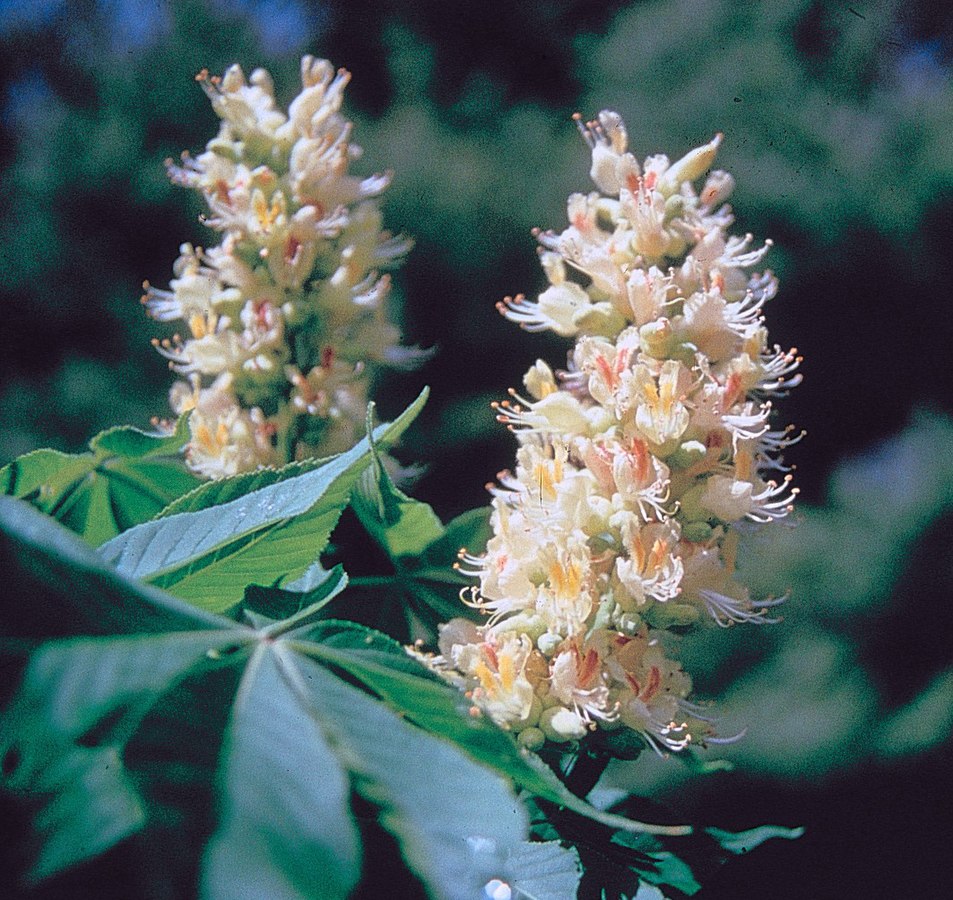
Native to central and southeastern United States, this deciduous tree is a member of the soapberry family, Sapindaceae, that also includes maple and lychee. The tree grows up to 70′ tall from a taproot and has corky gray bark and swooping branches with upturned tips. The leaves are palmately compound each with five spreading ovate-oblong leaflets 3-6” long. At first the leaves are bright green but turn dark green by summer and yellow to orange in early fall. Four to seven inch long panicles of greenish yellow flower up to 1″ long appear in early to mid May and give way to light brown 1-2 inch long prickly fruit capsules that contain 1-3 shiny, brown seeds, each with a pale scar (the buckeye). The fruit is poisonous to humans and cattle and all parts of the tree give off an unpleasant odor when bruised. The genus name, Aesculus, is the Latin word for a species of oak with edible nuts. The specific epithet, glabra, is the Latin word meaning hairless or smooth and refers to the leaves.
Type: Deciduous tree
Outstanding Feature: Orange foliage in fall; dense canopy for shade
Form: Rounded to broad rounded
Growth Rate: Medium
Bloom: Small greenish yellow panicles 4-7” long in early to mid May
Size: 20-40’ H x 20-40′ W (can grow to 75′ H)
Light: Full sun to light shade
Soil: Moist, well-drained, slightly acidic; not tolerant of dry soil.
Hardiness: Zones 3-7
Care: Prune in early spring if necessary
Pests and Diseases: Susceptible to mildew, leaf blotch, scorch and eastern mistletoe (Phoradendron leucarpon)
Propagation: Plant seed promptly after maturity in fall
Comments: Needs protection from prevailing winds, excessive heat, and air pollution.
Photo Credit USDA Wikispecies